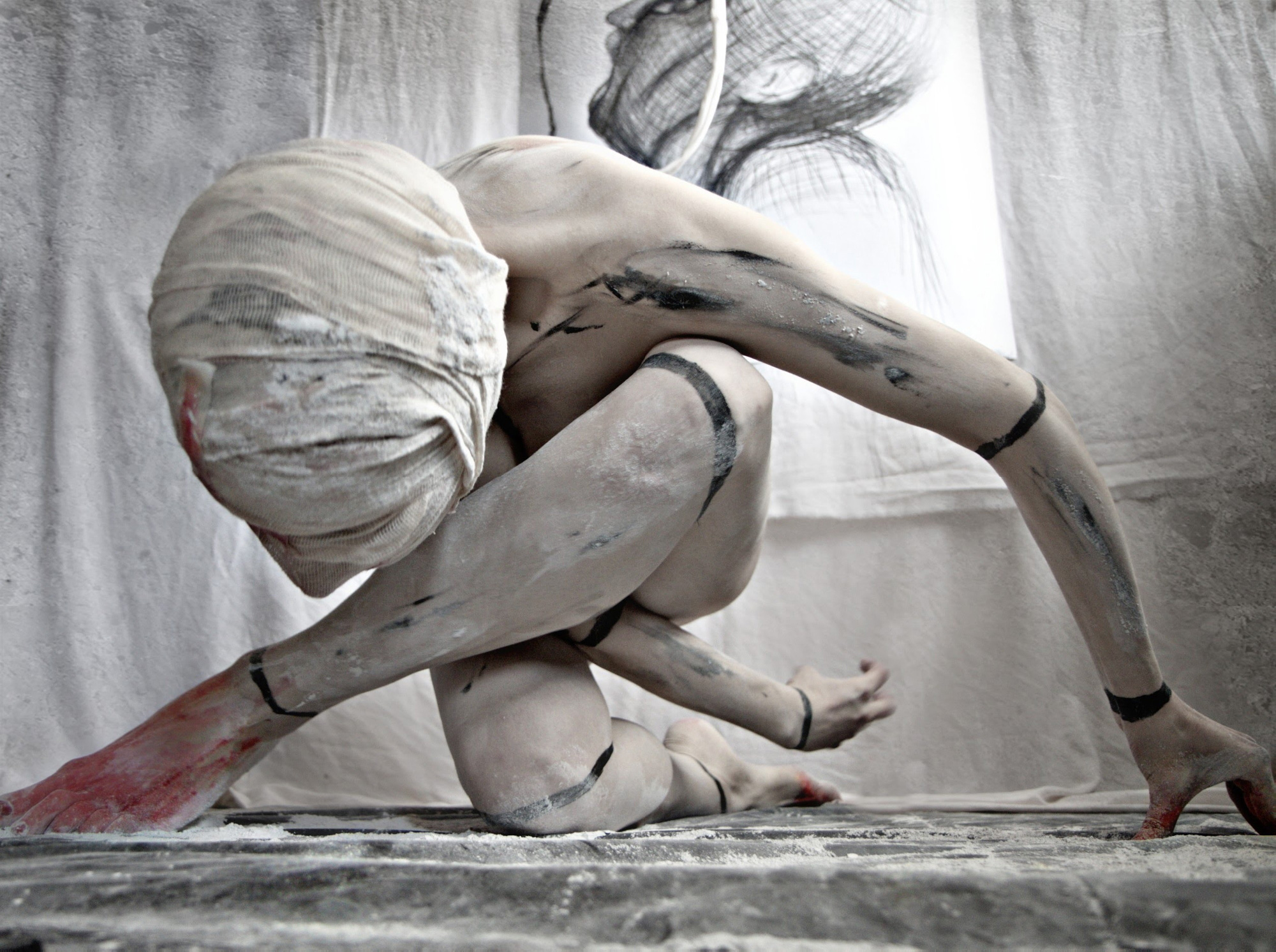
“Everyone carries a Shadow. And the less it is embodied in the individual’s conscious life, the blacker and denser it is.”
These are the wise words of the Ljilja, a mysterious Switzerland-based artist. She is referring to Carl Jung’s conception of the Shadow: the unconscious “dark side” of the personality driven by our more unenlightened urges, such as lust, rage, and the desire for power. For this particular artist, the Shadow is a figure to be seen, embodied, and subsequently purified on the way to reconnecting with the true self, the primal “I.” It is a messy process of catharsis, death, and rebirth, but as the Ljilja explains below, “we die to become.”
There is not much information readily available online about the Ljilja, except for an Instagram account featuring a gallery of creative and disturbing self-portraits, beautiful in their ferocity and vulnerability, shot in enclosed spaces and embellished with symbols of death, fetish, and religion. With imagery floating between the realms of rapture and torture, the Ljilja’s corner of the internet appears to be the nesting space of an enigmatic creature undergoing constant transformation.
We had the very special opportunity to peer into this space, talk with her, and learn more about her process, themes, and influences, all of which catalyze upon a deep foundation of philosophy, art, and literature examining the relationship between the ego and the body. Read on for the thought-provoking interview.
Top: For the Ljilja, art is a constant process of becoming.
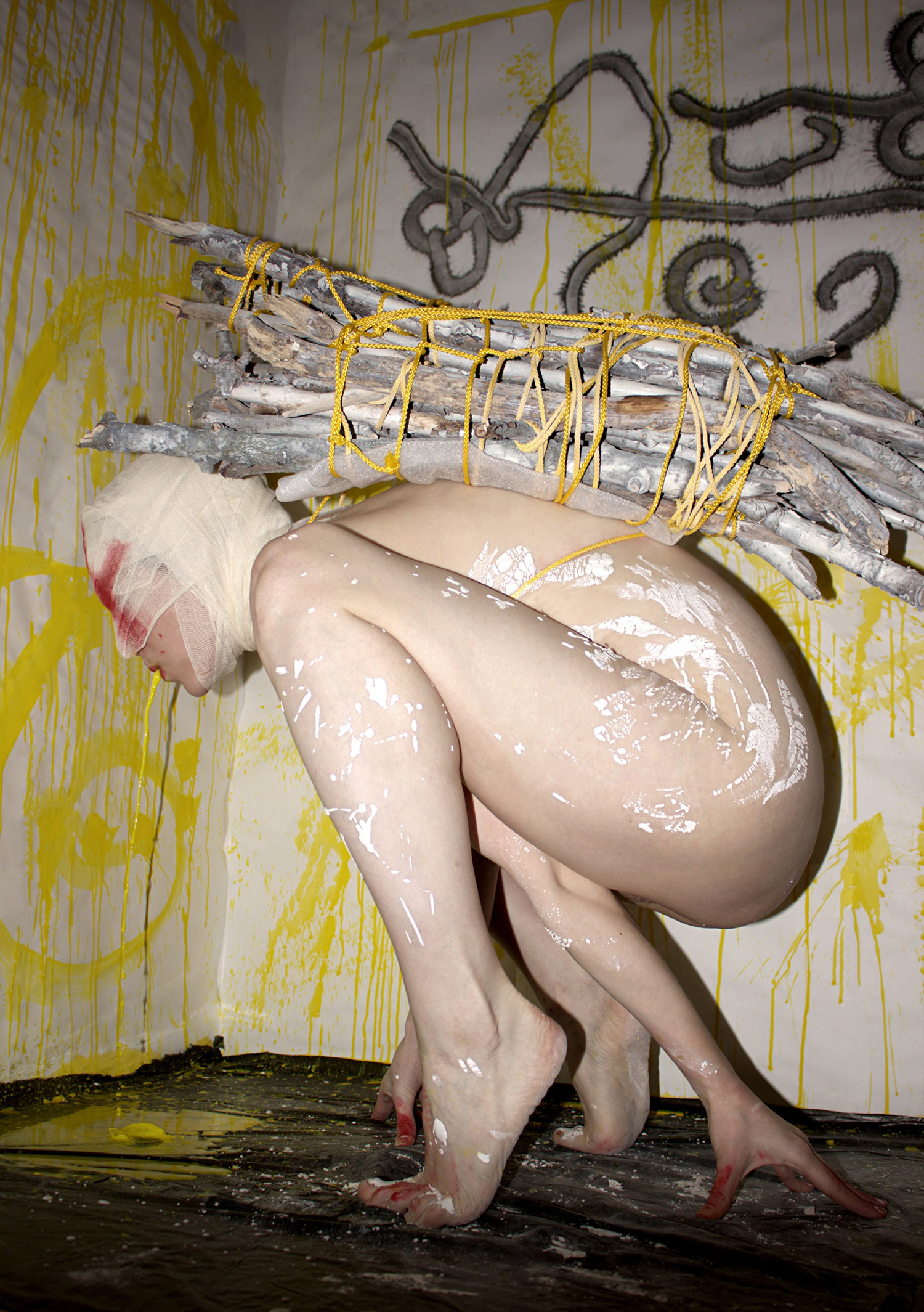
Discomfort is part of one’s awakening.
How would you describe your art style and techniques?
I use the word “ritual” to describe my art practice. Let me share here my first childhood memory; it goes back to when I was a baby. I am in a cradle with my twin sister sleeping next to me. I am sitting in dark, and I can see a light coming through the crack of the opened door. I hear my mother’s laugh. I see in the distance that she is preparing some milk for my sister and me. Her beautiful blonde hair and her soft smile are echoing through space. My brother is sitting at the table and smiling at her. They are a world standing alone in that space, and I am a silent witness.
All my pieces (whether we are talking about my photography, paintings, installations, or drawings) are a world standing alone in a space where time does not exist, an echo from the distant island. All of us observers are silent witnesses of that reality. Every single one of those worlds carry a message with them, a call for waking up and connecting all over again with our primal and true self.
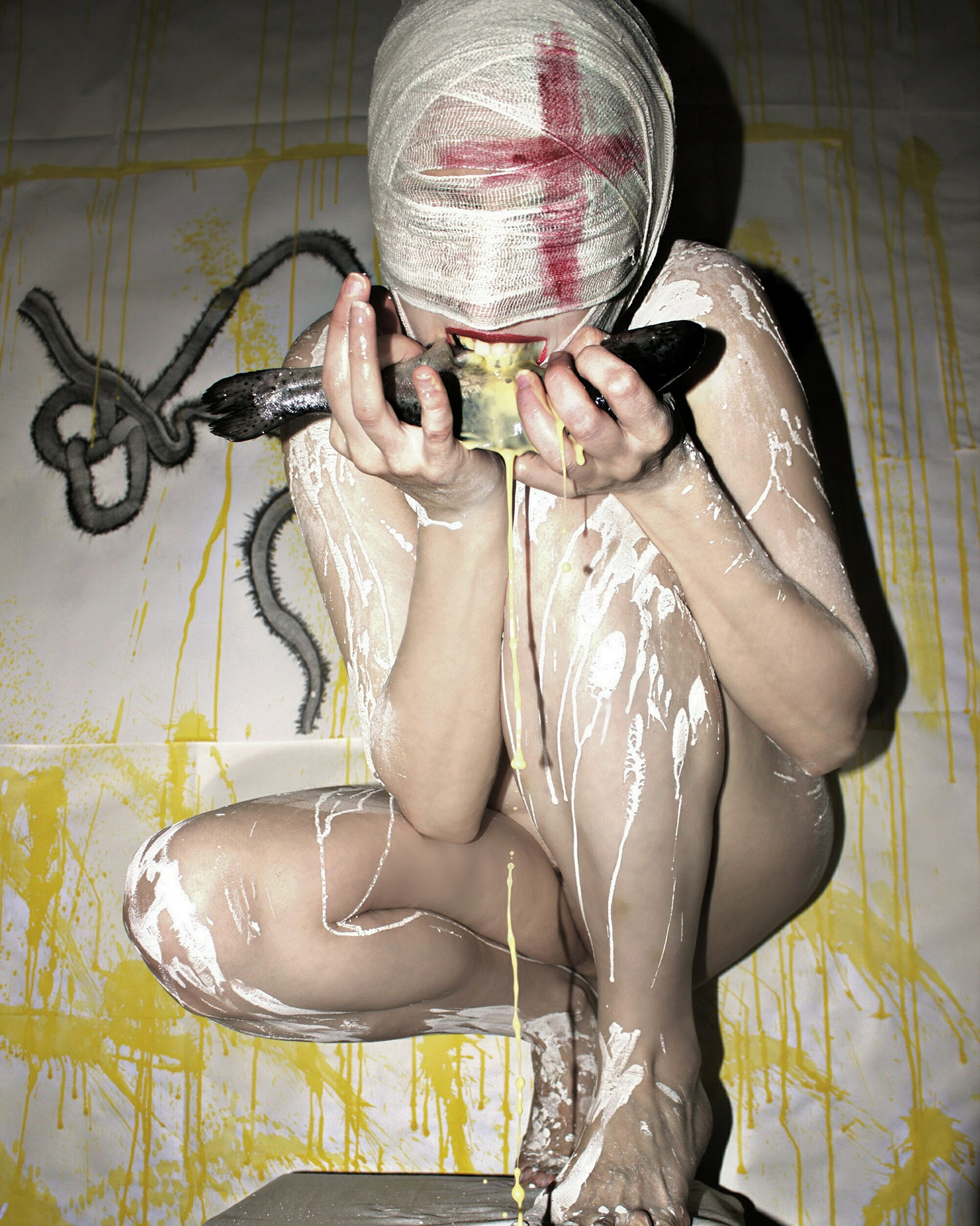
Pain and pleasure are nearly indistinguishable in the Ljilja’s self-portraits.
What is your creative process for creating your beautiful, grotesque, avant-garde portraits? I.e., how do you conceive your ideas, and are they all self-shot?
Anselm Kiefer said how an artist does not create ex nihilo [out of nothing]; he is in a stream. He sits there, but things go through him. He is pierced by thoughts, by movements. I am sitting in that stream, which contains: the past, present, and future of my life; the past, present, and future of my country; and the past, present, and future of this world. I am pierced by so many thoughts, and so many uncountable movements.
All of my photographs are self-portraits. Being both the shooter and the subject provides me with a lot of control over my ideas, but there are some specific challenges. Before every shooting, I do lots of meditative sketches, which are such an important part of my body of work. After I have carefully planned a shoot, I perform a ritual in front of my camera. The moment I connect with my inner Self, the movements burst out of me.
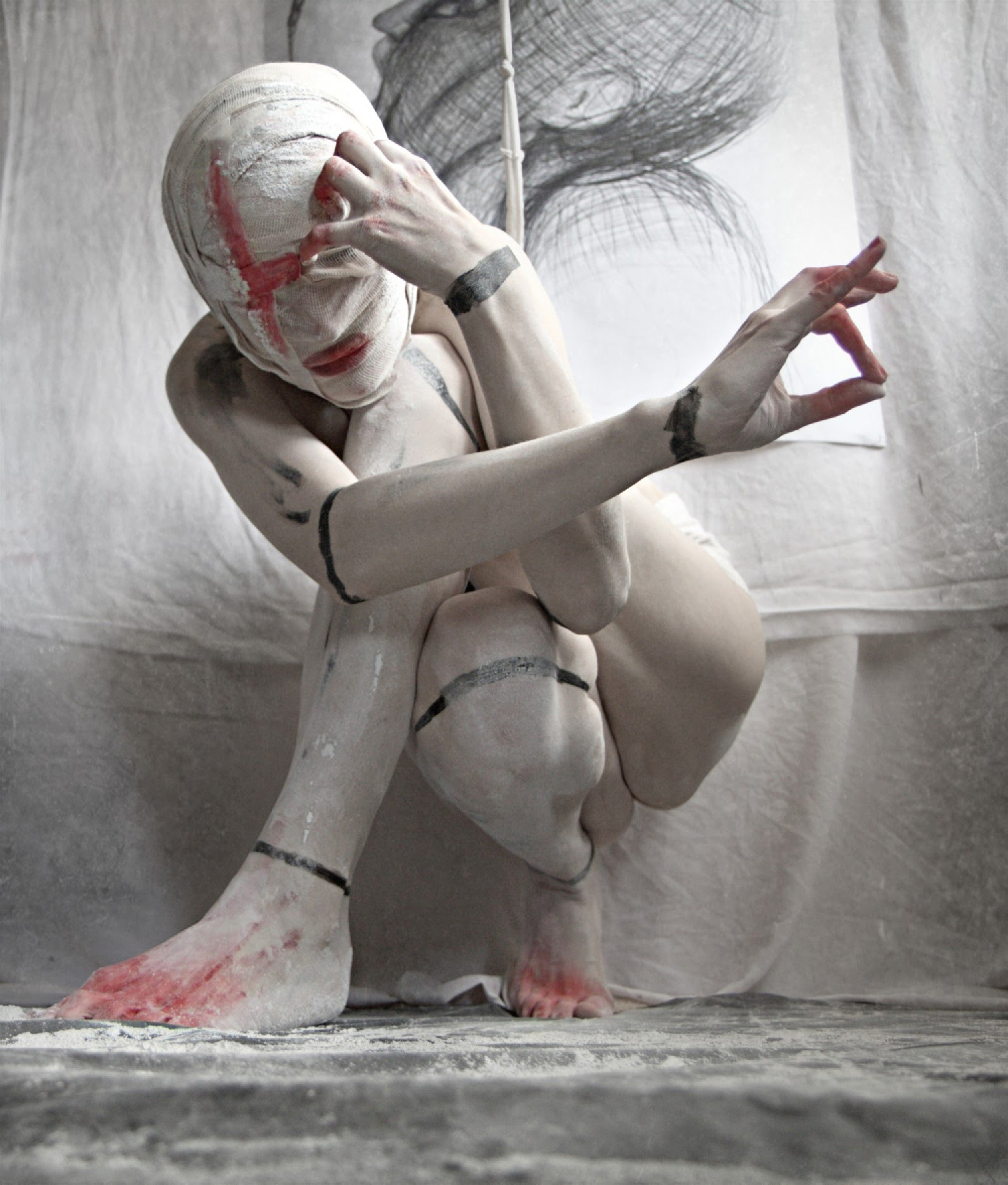
This image is titled “The Archetype of Life Itself.”
Who or what are some of your main inspirations?
Carl Jung and his “Alchemical Studies,” Artaud and his Theatre of Cruelty, Hijikata and his Butoh body, the Bible, virtual reality, etc. I am in a constant search for a selfless, content, and Ego-free body. A body that becomes; a bursting body. A body in which the human soul lives in complete freedom, stripped from all false teachings. A body which is “breaking down areas hardened by perspective of the Ego.” A primal body.
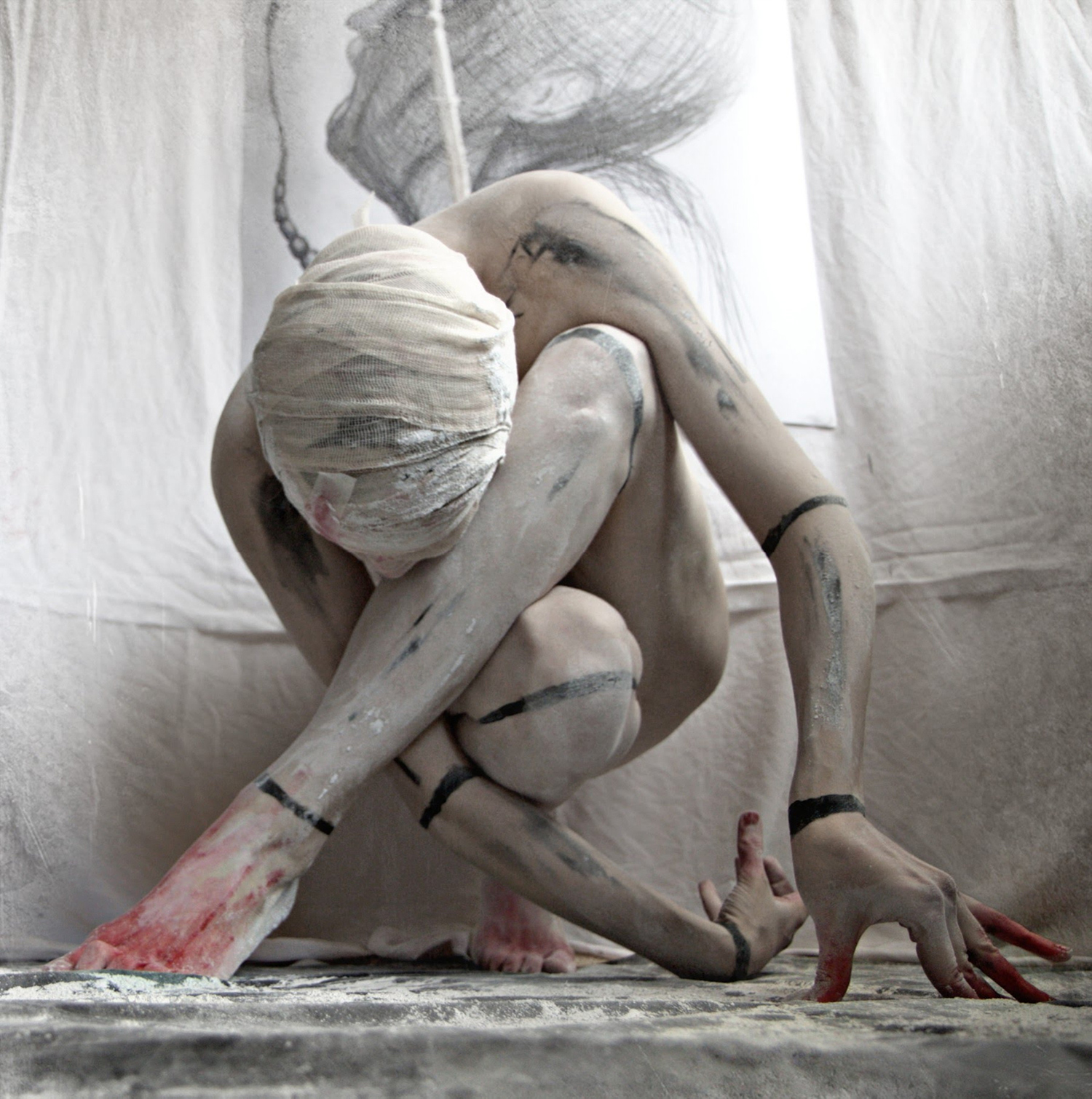
Death is integral to rebirth.
Your work is powerful on visceral level. What main emotions drive or define your work?
Michael Hornblow explains how at the end of To Have Done with the Judgment of God, Artaud called for a new kind of body—one in which the pain of life would burst out. I am interested in the dark parts of our being, that internal Tartarus where we have stored all our fears, pain, rage, and so on. I am interested in wounding, since it is wounding that prepares the primordial Self for change.
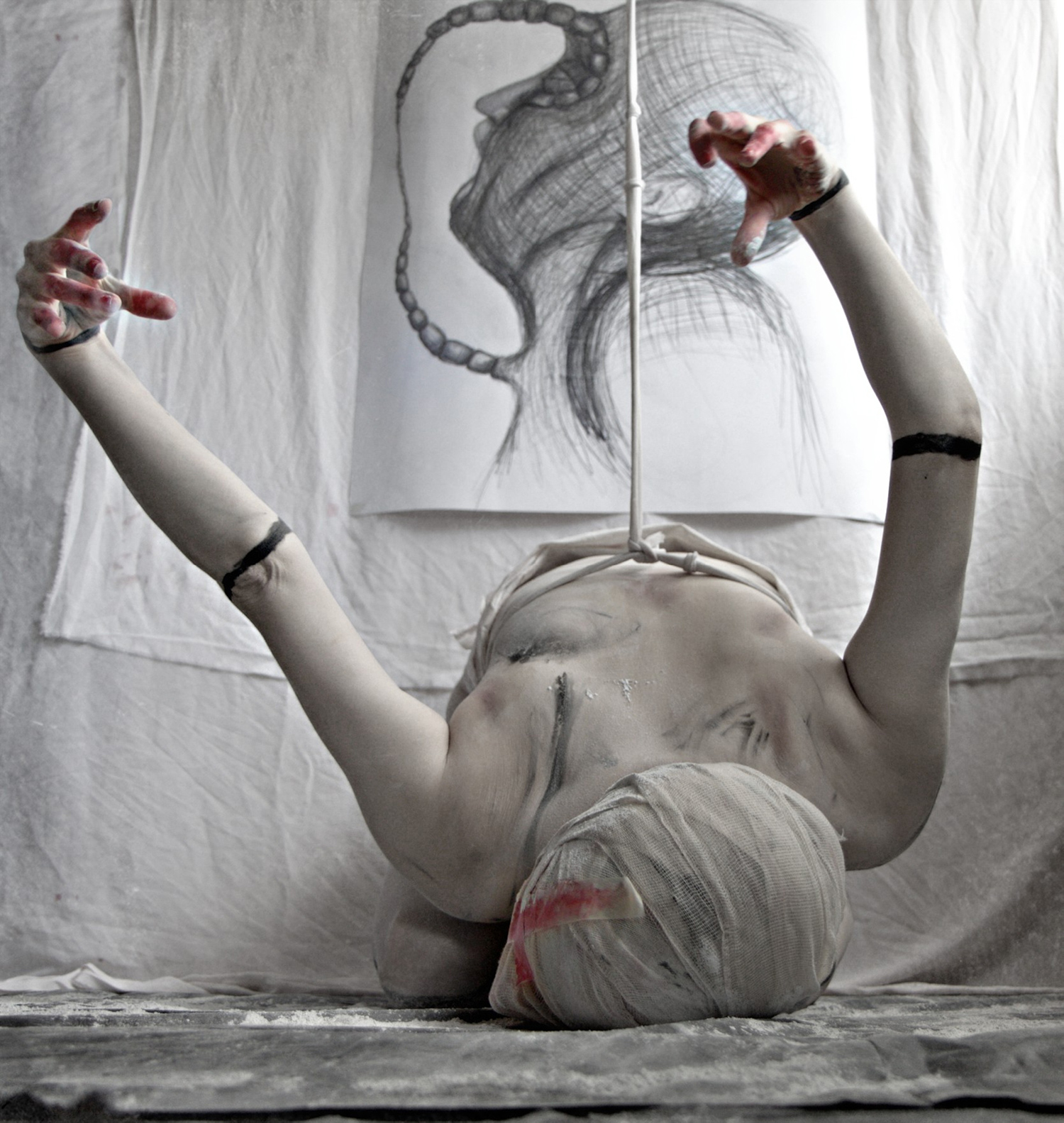
An embodied image of struggle and surrender.
What is the role of disfiguration in your work, especially the disfigurement (or obscuring) the face?
We live in an era where most of us are showing the best parts of ourselves, the most beautiful parts (a wonderful Kingdom of Selfies), and I am showing those hidden, dark, disturbing parts. By covering my face and hiding my identity, I have become no one, and by becoming no one, I have become everyone. By disfiguring my face, covering my eyes, I am allowing my Primordial Self to step out from the darkness. I am reconnecting all over again with my true Self.
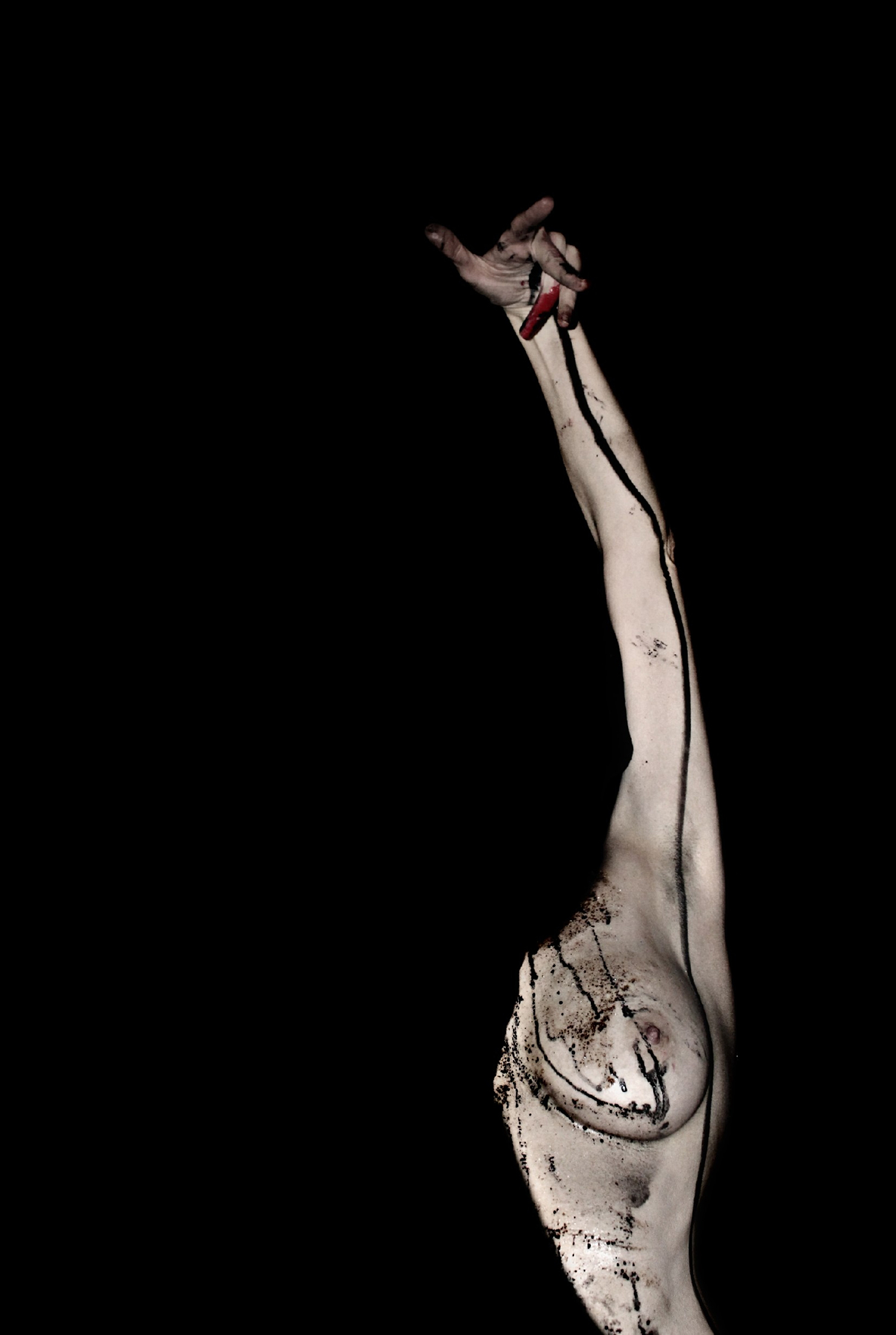
“The timeless dimension of our being.”
Your self-portraits are raw, honest, and disorienting, and they definitely fly in the face of conventional beauty. How do you perceive beauty, and how do you perceive ugliness?
What is beauty? Well, that question has, since Plato, held an important place in philosophy. Plato saw beauty as the “splendor of truth”; for Zola, beauty is a mood; Paul Valéry said that “beauty is a kind of death,”; for Philip K. Dick, “absolute suffering leads to—is the means to—absolute beauty”; Artaud and Bacon turned beauty into cruelty. I am not interested in beauty or ugliness, nor am I searching for those two. I am interested in the Primordial Self—that screaming and pulsating Primal “I” that wants to be set free.
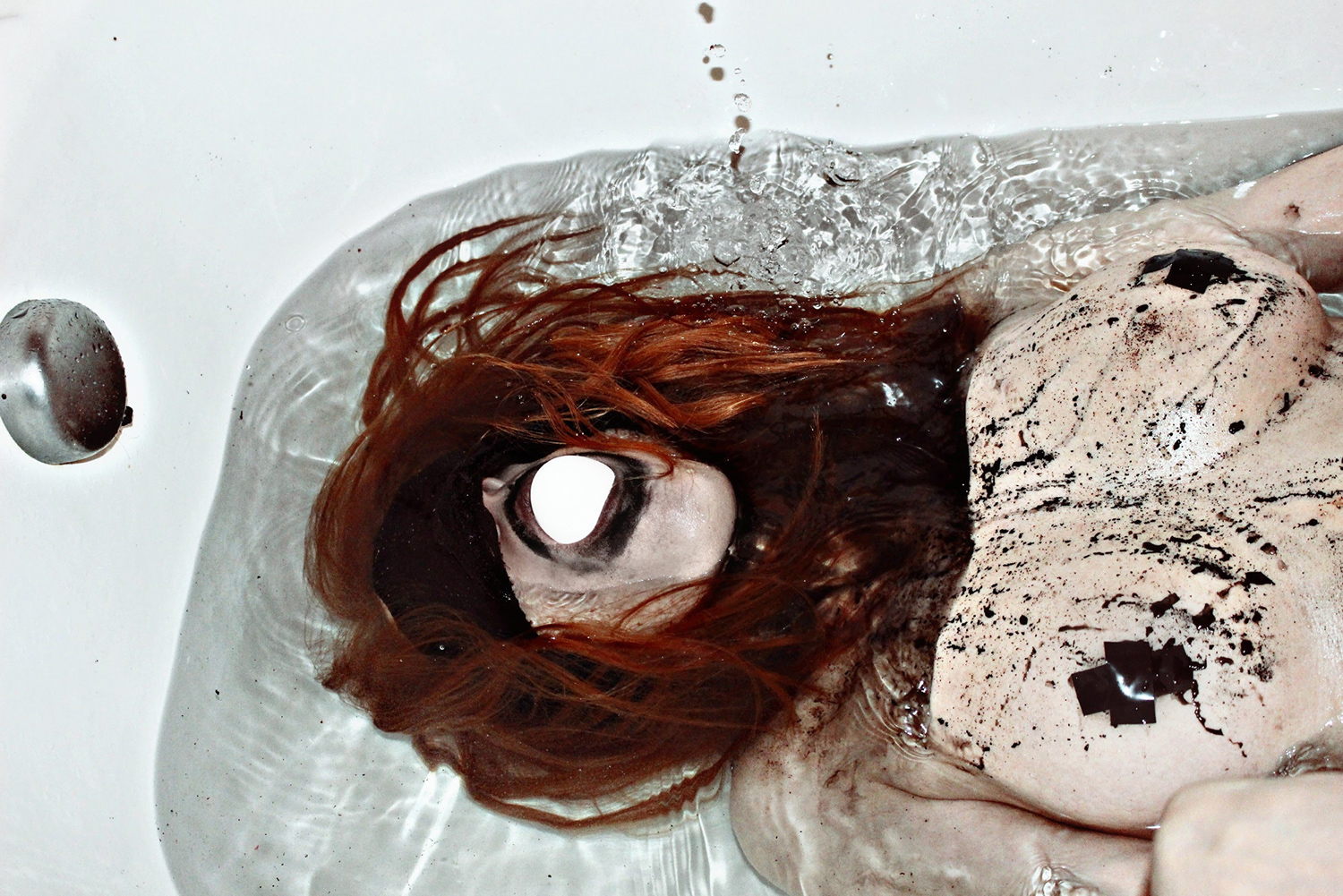
Fetish is symbolic in the Ljilja’s work.
Does sexuality and/or fetish play role in your work? If so, how?
Sometimes in my work I use fetish objects like gags, whip, chains, etc. When I use them, I am giving them another meaning, a sacred one. I am reshaping their purpose. A gag will represent black breath—or black sun—and silent words. I am interested to see how they will coexist with the inner state of my being.
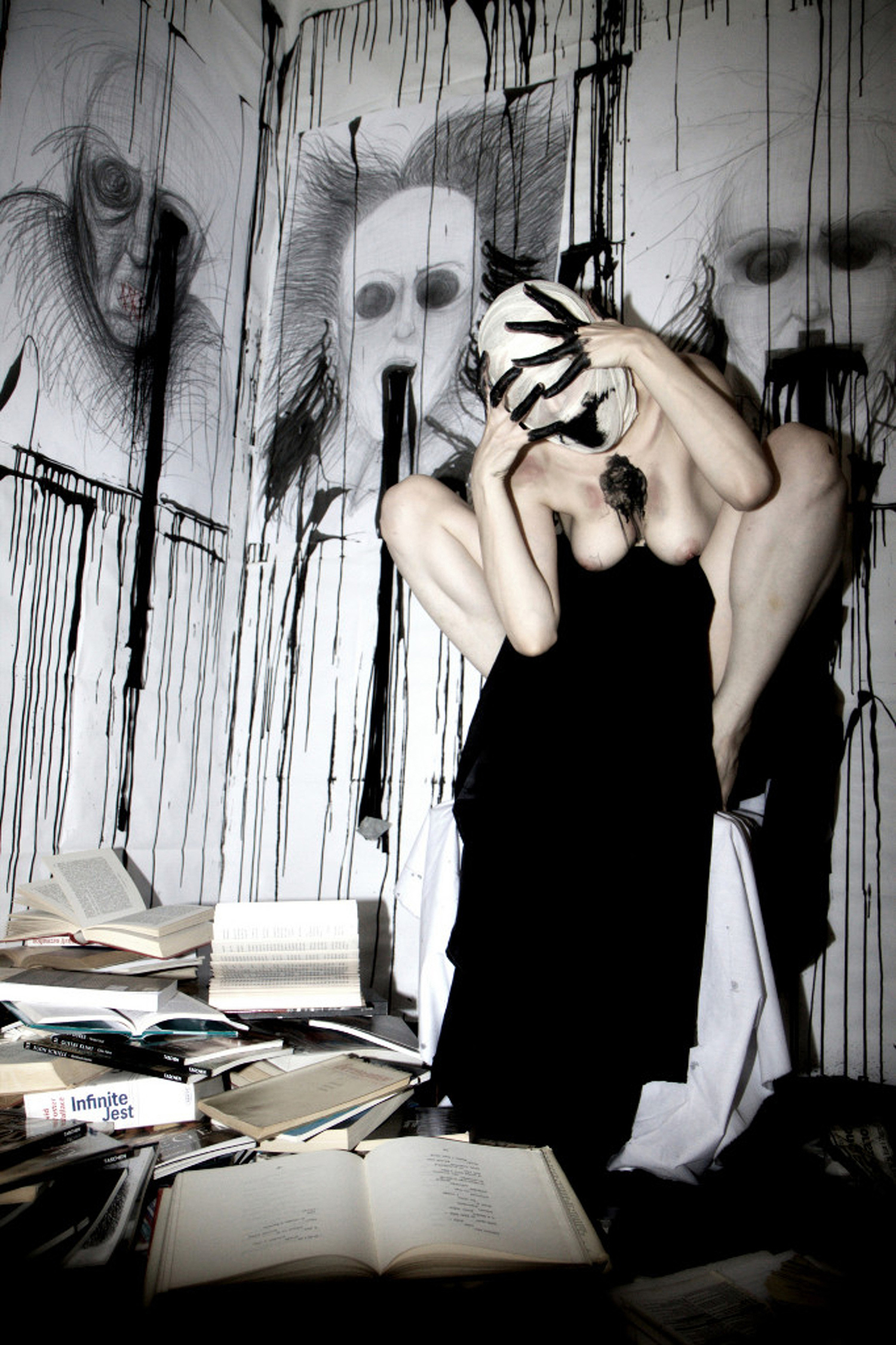
By masking her face and becoming no one, the Ljilja becomes everyone.
Religious iconography makes an appearance from time to time. What is significance of Christianity in your work and creative philosophy?
The Book of Psalms and its pure honesty, [as well as] Job’s and Christ’s [respective] lives are some of my inspirations. To be weak is to be strong is one of the messages that can be found in the Bible. At my first discovery of the line “for when I am weak, then I am strong,” I was fascinated how this truth is so much different from my perception of what it means to be strong. When Jesus raised Lazarus from the dead, Lazarus’s hands and feet were bound with wrappings, and his face was covered with cloth. Jesus said, “Unbind him, and let him go.” Under all those wrappings, the resurrected body was hiding, ready to be revealed to the world.
We die to become. The old me, with all its false truths, must die, and the new body—Artaud’s hollow body—should be born.
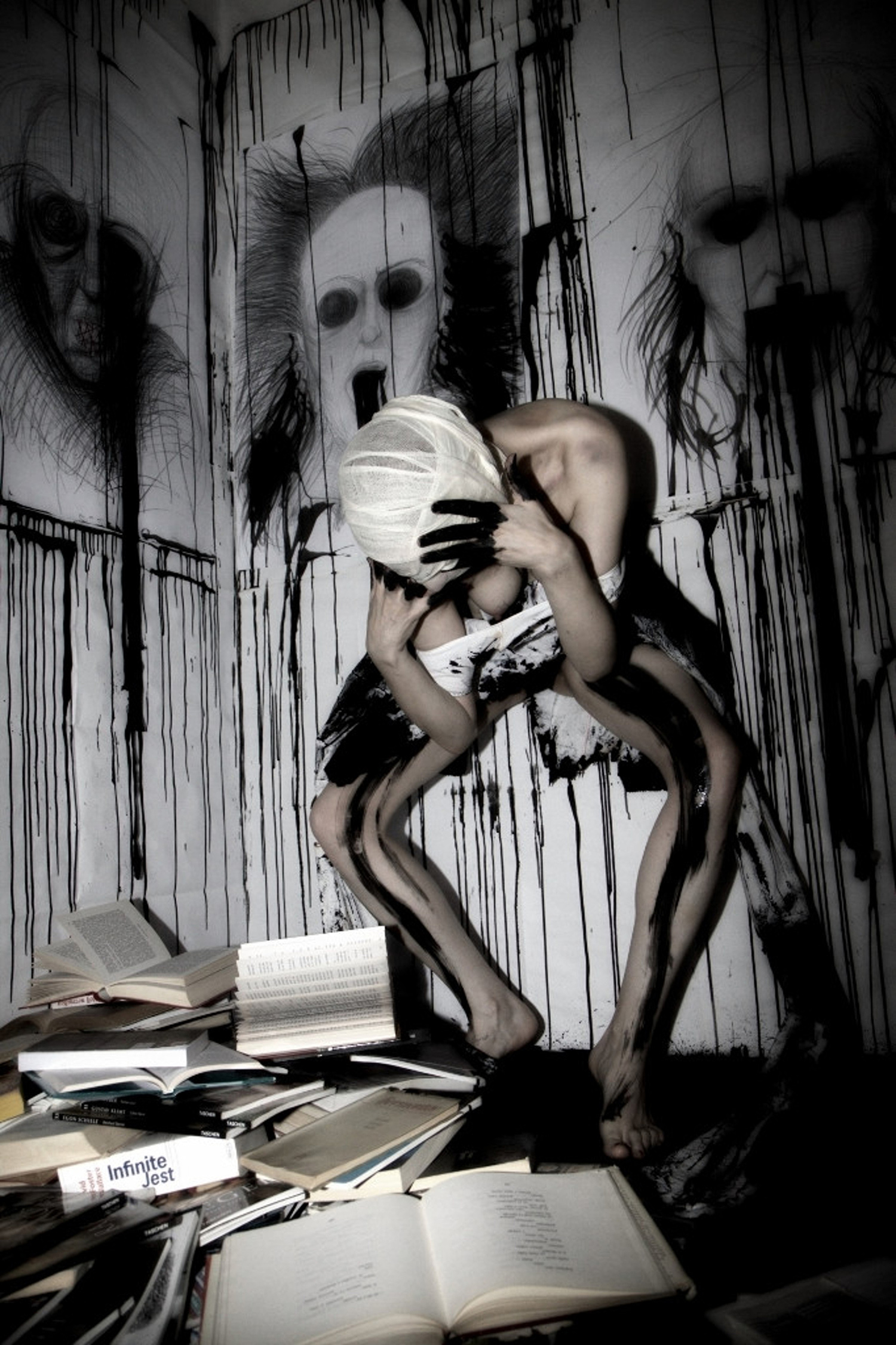
“The hidden paths are open.”
Your work is visceral, disturbing and transformational. What do you hope viewers will feel, think, and/or perceive when they encounter your work?
To be awakened.
Images © The Ljilja
